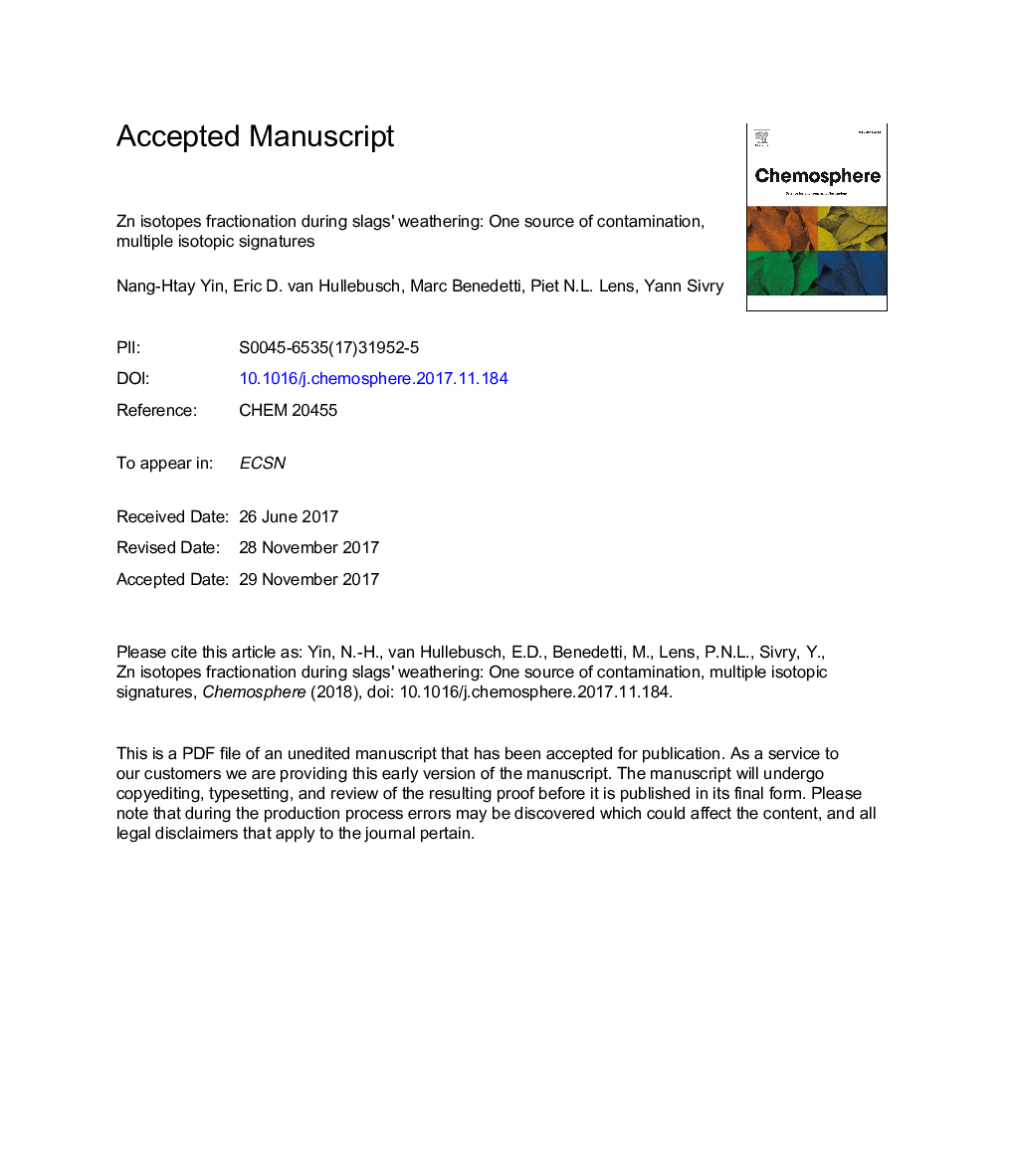| کد مقاله | کد نشریه | سال انتشار | مقاله انگلیسی | نسخه تمام متن |
|---|---|---|---|---|
| 8852235 | 1618776 | 2018 | 29 صفحه PDF | دانلود رایگان |
عنوان انگلیسی مقاله ISI
Zn isotopes fractionation during slags' weathering: One source of contamination, multiple isotopic signatures
دانلود مقاله + سفارش ترجمه
دانلود مقاله ISI انگلیسی
رایگان برای ایرانیان
کلمات کلیدی
موضوعات مرتبط
علوم زیستی و بیوفناوری
علوم محیط زیست
شیمی زیست محیطی
پیش نمایش صفحه اول مقاله

چکیده انگلیسی
During the chemical weathering of lead blast furnace (LBF) and imperial smelting furnace (ISF) slags, possible Zn isotopes fractionation was studied as a function of pH, atmosphere (open air vs nitrogen), and time. Bulk LBF and ISF displayed heavier signatures compared to Johnson Matthey Company (JMC) Zn standard solution (i.e. 0.13â¯Â±â¯0.06â° and 0.78â¯Â±â¯0.13â° for LBF and ISF, resp). The Zn signatures vary greatly by changes in solution pH; heavier signatures at low pH and lighter signature at high pH. Smithsonite (ZnCO3) formation could induce a big delta Î66ZnNitro-Open.atm of 1.13â° at pH 10 and rapid zinc hydroxide precipitation could induce Î66ZnNitro-Open.atm of 0.13-0.2â° at pH 8.5. In addition, slags contain many mineral phases: â¼80-84% of amorphous glassy phase (in v/v) and â¼16-20% of many other crystalline phases. Zn isotope signatures in primary mineral phases can be extrapolated where the signature of the amorphous glassy phase lies between â0.35â° and â0.42â°, and that of the overall crystalline phases was estimated to be 2.12â° for LBF and 5.74â° for ISF. Therefore, un-weathered slags with many mineral phases can host distinct Zn isotope signatures, which further evolve significantly during chemical weathering. One should thus carefully consider the heterogeneity of slags and the low-temperature chemical processes which lead to diverse Zn isotopic signature in the end, when using Zn isotopes as tracer of smelter's contamination.
ناشر
Database: Elsevier - ScienceDirect (ساینس دایرکت)
Journal: Chemosphere - Volume 195, March 2018, Pages 483-490
Journal: Chemosphere - Volume 195, March 2018, Pages 483-490
نویسندگان
Nang-Htay Yin, Eric D. van Hullebusch, Marc Benedetti, Piet N.L. Lens, Yann Sivry,